- Joined
- Jan 5, 2021
- Messages
- 434
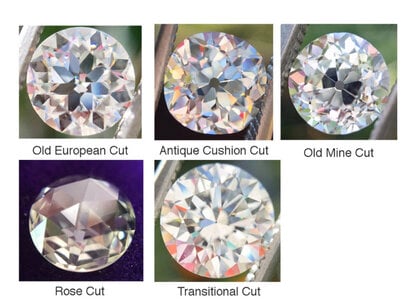
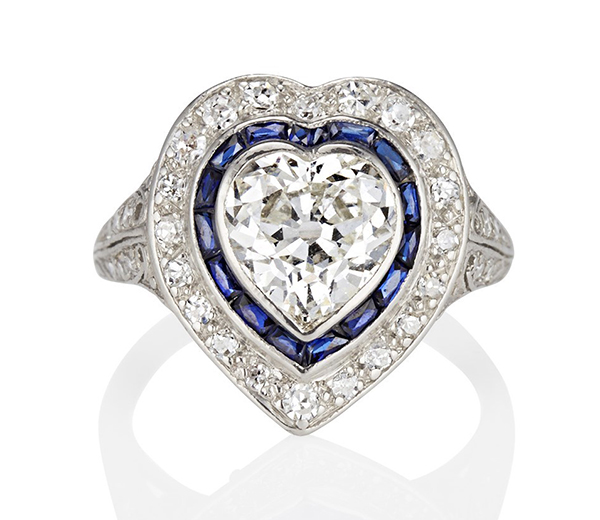
I find this visual and the article it came from by Grace Navarro are useful to illustrate the difference…
Though the image of the old mine and antique cushion don't seem that accurate to my untrained eye.

Jewels by Grace, the Antique Jewelry Storyteller
I am a big fan of Grace Lavarro's Instagram account @Jewels by Grace. The antique jewelry pieces and …www.yourengagement101.com
Transitionals can have more of a checkerboard appearance than OECs.
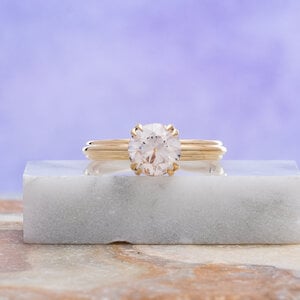
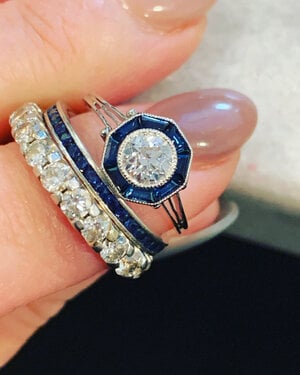

They’re all beautiful in their own right! I’d love one from each cutting period.
Probably what I knowBeautiful! It’s interesting…I would’ve described this as an OEC with a checkerboard pattern, but what do I know?
Probably what I know. Sometimes I see a flower pattern and sometimes I see a checkerboard which is why I'm asking for feedback. Thanks for yours. I think it jives with the reality of looking at the stone.
Your stone is just drop-dead gorgeous. I can see checkerboard in one picture and a flower in another. It is drool-worthy!
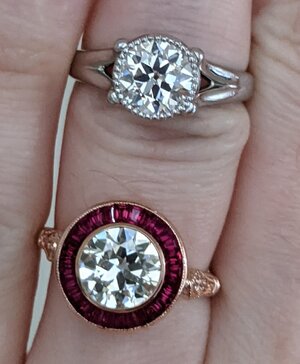
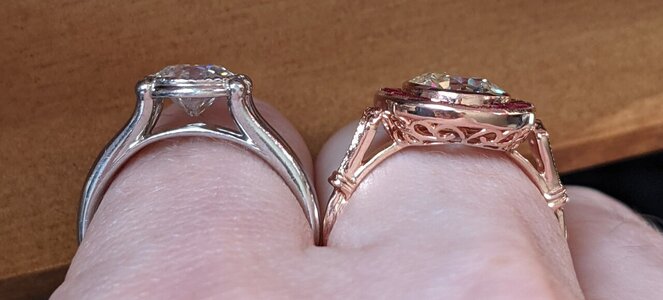
For me, better symmetry, a tiny culet, and a table that's close to the depth percent, or perhaps larger than the depth percent, usually under 60%, plus short lower halves (i.e. in contrast to early MRBs with longer lower halves) makes a "transitional." In contrast, OECs have "ring-pop" proportions, with big puffy crowns, variable symmetry, and a variable, but usually medium or larger, culet. (edited to add: because of the crown floof, OEC = table considerably smaller than depth!)
I call both of these stones "transitional," although the ruby-halo one was sold to me as an OEC. I don't have proportions on it, although the crown is not high and the table is relatively large. The platinum bezel one was from Adam at OWD and he described it as "transitional," with a depth and table % in the mid to upper 50s. They both have very small culets and good symmetry (hence, the arrows - it is really hard to get them both to line up simultaneously so you might have to trust me on that!). Note the pronounced lack of crown poof!

Love both those settings, especially the super low second one.
Not to threadjack, but it's from I&R; thank you!I love low bezel settings -- and yanking the conversation back on track -- it's also partly why I love transitionals! Can't get a stone with 65% depth as low as you can a stone with 55%.

